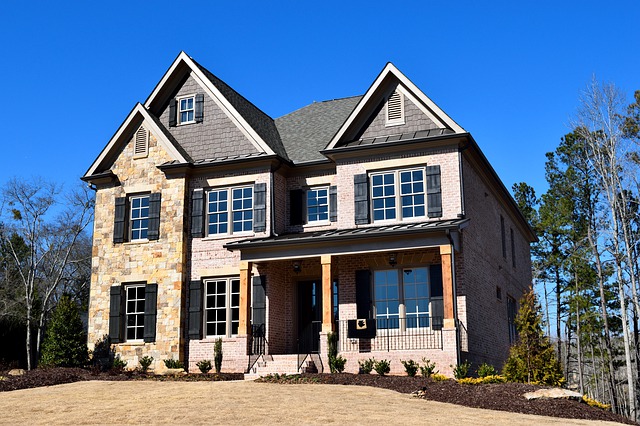When was my House Built: How to find out exactly

Do you need to find out exactly when the house was built? If so, then you’re on the right webpage. Keep reading, and you will learn how to find out the age of your property.
To determine when your house was built, use research and investigation methods. Find out the documents of your property. Check the dates of documentation, a bound set of papers that tell your home’s history in date order.
If you don’t find your documents, go to the county recorder’s office or visit its website. The recorder’s office has all the records of all properties as public records. You can have an idea of the year in which your home was built by looking at the records.
Research and inquiry methods can be used to ascertain the year a home was built. The year a home was built has an impact on its worth as well as its attraction to potential buyers. A home with obsolete features or design is usually less valuable than a newer equivalent home in the same location. A newer home with a known problematic design utilized in the year of construction, on the other hand, is worth less than a property in the same neighborhood without the design. If you don’t know the age of your house since it’s so old, you may need to do some additional research for when the house was built.
Here, we have discussed some ways of finding out the exact time when your house was built.
Check for HM land registry records to find when was your House Built
To find out the age of your house, check the Her Majesty land registry records. They have historical ownership records known as title registers. Your house’s age can be found out by seeing transferred dates from the developer to the first owner. You may have a copy of the title registers as well; you can use it to compare the dates to find out the exact age of your home. If not, then visit the land registry portal and enter the postal-code. A list of properties will appear, and you might find your property there.
Checking the HM Land Registry records is an easy way to determine the age of your home. Title Registers are historical ownership records kept by the HM Land Registry (Deeds). You can determine the age of the property by looking at the date the property was transferred from the developer to the first owner.
The Title Register may already be in your possession. Your conveyancer would have sent this to you a few months after you purchased the property. If you need to know before you buy, your estate agent, conveyancer, or mortgage broker will usually have a copy. If not, enter your postcode here (Land Registry eServices).
A list of properties on your street will be displayed (or you can enter the house number on the first screen in addition to the postcode). Then, choose ‘Title register’ (another name for the property deed), pay £3, and download the PDF. Please keep in mind that you will need to create an account (by filling a fairly simple online form).
You can also download the ‘Title plan,’ which shows the boundaries of the land surrounding the property, for an additional £3. You can also download information about flood risks associated with the property for £9. Although it is a somewhat intimidating document to read, you will be able to see the age of the property near the top.
Typically, you want to look for the first section, ‘A: Property Register.’ After the number ‘1’ (in brackets), there is a date when the property was first registered. Although the property may not have been built on this date, it was most likely built around that time. It is important to note that older deeds may be formatted differently, and even if the sale was private, you should be able to find a copy (unless the property is unregistered).
Architectural style & characteristics

There are cases that the properties were not registered in the past. Often houses have no registration date mentioned in the records. If that’s the case with your property, you can determine by analyzing your house’s characteristics, i.e., its interior and exterior designs. As time passes by, architectural designs also change, so you can have an idea by finding out the dates when your house’s design was in trend. Moreover, you can ask any professional architectural investigator to help.
Surrounding properties
Homes that are built in your surroundings can give an idea about when your house was constructed. In urban areas, properties are more uniform. Some buildings are constructed for special purposes. In many cases, features of the old buildings are retained for several reasons. You may find evidence of their original use by exploring the surrounding land. When you observe the nearby architectural designs around your house, they will help you find the time when your house was built.
Looking at the surrounding area can also help you determine the era in which your house was built. This is likely to be easier in less urbanized areas with more uniform property types.
Some structures, for example, were built for a specific purpose. Is there an industrial history in your town? Is your house built nearly identical to many others – and are the houses arranged in neat rows?
If so, you could live in an old mill or factory worker’s cottage, which were built during the industrial revolution for employees of a local business.
Many of the old buildings’ features will have been preserved for historical purposes, or you may find evidence of their original use if you explore the surrounding land.
Otherwise, talking to neighbors and local residents – particularly pub owners and regulars, hoteliers, and other people who are well-versed in community happenings – may help you get a few leads.
Historical investigations of when your house was built
If you are still struggling to find out the age of your house, you should investigate deeper. Most of the libraries have maps of your local area; you may find your house in them. This will help in finding out the date of construction of your house. If you do not find anything on maps, the local historical society can also help you with their records.
Here are a few ideas:
- Local forums can be found in many towns and cities. It’s sometimes worthwhile to inquire about those;
- Similarly, ask your neighbors, particularly those who have lived in the area for a long time and/or have properties similar to yours.
- Local estate agents who are well-established in the area may be able to help.
- If there are any museums or tourist offices nearby, it may be worthwhile to inquire there.
- You could contact a local surveyor, though many will refuse to provide information for free.
We hope that the ways mentioned above will help you find the exact date when your house was built.